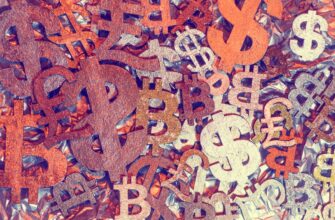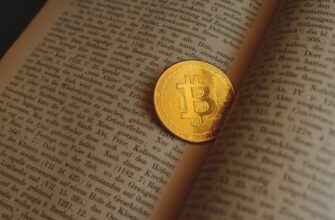# USDT vs USDC: Key Differences Between Top Stablecoins Explained
Stablecoins like Tether (USDT) and USD Coin (USDC) dominate the cryptocurrency market, offering price stability pegged to the US dollar. But what sets these giants apart? This comprehensive guide breaks down their origins, transparency, security, and use cases to help you navigate the $130B+ stablecoin ecosystem.
## What Are Stablecoins and Why Do They Matter?
Stablecoins are cryptocurrencies designed to maintain a consistent value, typically 1:1 with fiat currencies like the US dollar. They serve as:
– **Volatility buffers**: Shelter during crypto market swings
– **Trading pairs**: Primary liquidity source on exchanges
– **DeFi gateways**: Collateral for lending/borrowing protocols
– **Cross-border rails**: Low-cost global payment solutions
Unlike volatile assets like Bitcoin, stablecoins combine blockchain efficiency with fiat-like stability.
## Tether (USDT): The Market Leader
Launched in 2014, Tether is the oldest and largest stablecoin with a $110B+ market cap. Key characteristics:
**Issuer**: Tether Limited (affiliated with Bitfinex exchange)
**Collateral**: Mix of cash, commercial paper, treasury bills, and other assets
**Transparency**: Quarterly attestations (not full audits)
**Blockchains**: Ethereum, Tron, Solana, and 10+ others
**Controversies**:
– Historical lack of auditing
– 2019 NYAG case over $850M cover-up
– Ongoing scrutiny over reserve composition
USDT dominates trading volumes but faces persistent trust questions.
## USD Coin (USDC): The Regulated Contender
Created in 2018 by Circle and Coinbase, USDC has grown to a $32B market cap with emphasis on compliance:
**Issuers**: Circle (fintech firm) and Coinbase (NASDAQ-listed exchange)
**Collateral**: 100% cash and short-term U.S. Treasuries
**Transparency**: Monthly audited reports by Grant Thornton
**Blockchains**: Ethereum, Solana, Avalanche, and 15+ networks
**Regulatory stance**:
– Registered Money Service Business (MSB)
– Complies with OFAC sanctions
– Banking partners include BlackRock and BNY Mellon
USDC prioritizes institutional trust but faced a brief depeg during March 2023’s banking crisis.
## USDT vs USDC: 6 Critical Differences
1. **Transparency**
USDC: Monthly audited reserves
USDT: Quarterly unaudited attestations
2. **Reserve Composition**
USDC: 100% cash and U.S. Treasuries
USDT: ~80% “cash equivalents” including corporate debt
3. **Regulatory Compliance**
USDC: Explicit OFAC adherence, banking partnerships
USDT: Operates in regulatory gray areas
4. **Market Dominance**
USDT: 70% market share, higher liquidity
USDC: Preferred by institutions and DeFi protocols
5. **Stability Mechanisms**
Both maintain dollar peg via arbitrage:
– Traders buy when $1
USDC shows tighter peg consistency historically
6. **Use Case Strengths**
USDT: Favored for Asian exchanges and OTC markets
USDC: Dominant in U.S.-regulated platforms and DeFi
## Which Stablecoin Should You Use?
**Choose USDT if**:
– Trading on Binance or other non-U.S. exchanges
– Needing deepest liquidity for large transactions
– Using Tron network for low-fee transfers
**Choose USDC if**:
– Prioritizing regulatory compliance
– Engaging with U.S.-based services like Coinbase
– Participating in Ethereum/Solana DeFi protocols
– Holding long-term reserves
Diversification across both mitigates single-issuer risk.
## Stablecoin FAQ: USDT vs USDC
**Q: Can USDT or USDC lose their dollar peg?**
A: Temporarily yes (e.g., USDC dipped to $0.87 during SVB collapse), but arbitrage mechanisms typically restore parity within days.
**Q: Which is safer: USDT or USDC?**
A: USDC’s transparent reserves and regulatory compliance offer lower counterparty risk. USDT carries higher uncertainty but has survived multiple stress tests.
**Q: Are these stablecoins FDIC-insured?**
A: No. Neither provides FDIC coverage, though USDC reserves are held at insured banks.
**Q: Which has lower transaction fees?**
A: Fees depend on blockchain networks, not the stablecoin itself. Tron-based USDT often has the lowest costs.
**Q: How do I convert between USDT and USDC?**
A: Use decentralized exchanges (Uniswap, Curve) or centralized platforms like Kraken. Expect minor slippage during volatile periods.
**Q: Could regulators ban USDT or USDC?**
A: Possible but unlikely. USDC proactively complies with regulators. USDT faces higher regulatory risk but systemic importance complicates enforcement.
## Final Verdict
While USDT offers unparalleled liquidity and market reach, USDC leads in transparency and regulatory alignment. For most users, holding both provides optimal flexibility. Always verify issuer reserves and monitor regulatory developments, as the stablecoin landscape evolves rapidly. As blockchain bridges traditional finance and crypto, understanding these differences becomes crucial for informed digital asset management.








